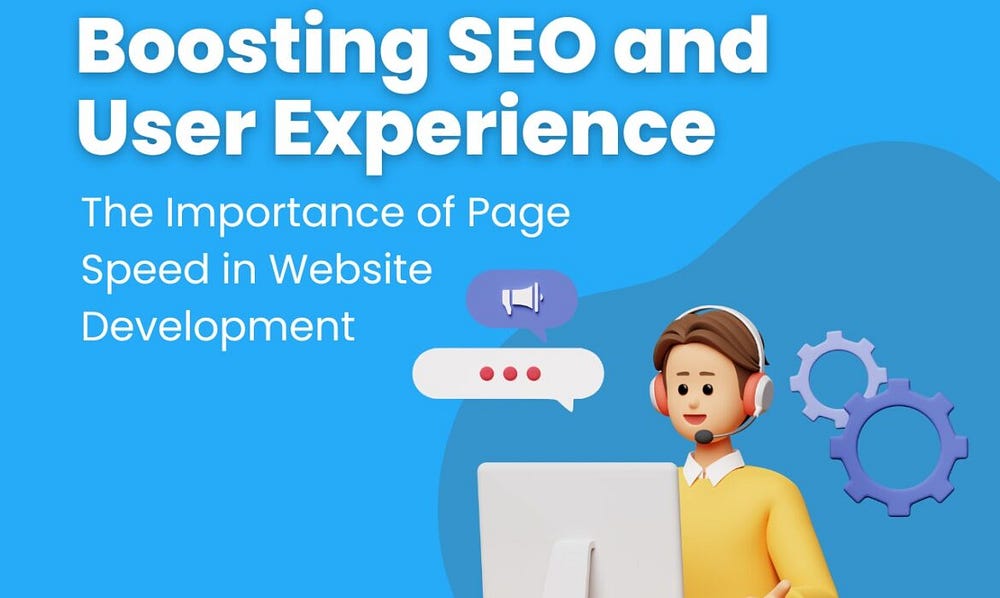
Page speed has become a critical factor in website development in today’s fast-paced digital world. Not only does it significantly impact user experience, but it also plays a vital role in search engine optimization (SEO). Websites that load quickly are more likely to retain visitors, engage them effectively, and rank higher in search engine results. In this blog, we’ll delve into why page speed is so important and provide actionable tips to enhance your website’s performance.
Why Page Speed Matters:
- User Experience (UX):
Page speed directly affects how users perceive your website. Slow-loading pages can frustrate users, leading to higher bounce rates and lower engagement levels. Conversely, fast-loading pages provide a smoother, more enjoyable experience, encouraging users to stay longer and interact more with your content.
- Bounce Rates: Studies show that a delay of just one second in page load time can increase bounce rates by 32%. Users expect immediate access to information, and any delay can lead them to abandon your site for faster alternatives.
- Engagement and Conversions: Faster websites lead to higher user satisfaction, which translates into better engagement and higher conversion rates. A seamless user experience can significantly influence purchasing decisions and lead to more sales or leads.
SEO Benefits:
- Google has explicitly stated that page speed is a ranking factor. Websites that load faster are favoured in search engine results pages (SERPs), giving them a competitive edge.
- Mobile-First Indexing: With Google’s shift to mobile-first indexing, page speed on mobile devices has become even more critical. Optimizing for mobile speed can improve your visibility in search results, especially as more users access the web via mobile devices.
- Core Web Vitals: Google’s Core Web Vitals, which include metrics like Largest Contentful Paint (LCP), First Input Delay (FID), and Cumulative Layout Shift (CLS), are essential for assessing page speed and overall user experience. Meeting these benchmarks can enhance your SEO performance.
How to Improve Page Speed:
- Optimize Images:
Large, unoptimized images are one of the most common causes of slow page load times. Ensure all images are compressed and properly formatted.
- Image Compression: Use tools like TinyPNG or JPEGoptim to reduce image file sizes without compromising quality.
- Responsive Images: Implement responsive images that adjust based on the user’s device and screen size to reduce unnecessary data usage.
- Leverage Browser Caching:
Browser caching stores certain elements of your website in users’ browsers, reducing the need to reload the entire page with each visit.
Set Expiry Dates: Configure your server to set expiry dates for cached content, ensuring users load the most recent version of your site without repeated data requests.
Minify CSS, JavaScript, and HTML:
Minifying your code involves removing unnecessary characters, such as spaces and comments, without affecting functionality.
Tools: Use tools like UglifyJS, CSSNano, and HTMLMinifier to streamline your code and improve load times.
- Enable Compression:
Compression reduces the size of your files, making them quicker to download.
Gzip Compression: Enable Gzip compression on your server to compress HTML, CSS, and JavaScript files. This can significantly reduce file sizes and improve page speed.
Reduce Redirects:
Each redirect creates additional HTTP requests and increases load times. Minimize redirects to enhance performance.
Audit Redirects: Regularly audit your website for unnecessary redirects and eliminate them wherever possible.
Use a Content Delivery Network (CDN):
A CDN distributes your website’s content across multiple servers worldwide, allowing users to load your site from a server geographically closer to them.
CDN Services: Implement a CDN service like Cloudflare or Akamai to reduce latency and improve load times for users across the globe.
Optimize Server Response Time:
The time it takes for your server to respond can significantly impact page speed. Aim for a server response time under 200 milliseconds.
Hosting: Choose a reliable hosting provider that offers fast and scalable solutions to meet your website’s needs.
Improving page speed is essential for providing a superior user experience and enhancing your SEO performance. By optimizing images, leveraging browser caching, minifying code, enabling compression, reducing redirects, using a CDN, and optimizing server response times, you can ensure your website loads quickly and efficiently.
Ready to boost your website’s speed and performance? Partner with AimGlobal. Our team of experts can help you optimize your website for faster load times, better user experience, and improved SEO. Contact us today to learn more about our comprehensive website development and optimization services.

No comments:
Post a Comment